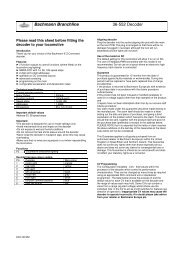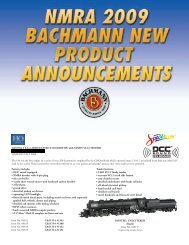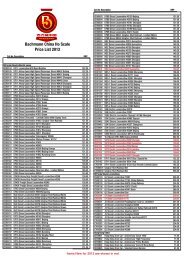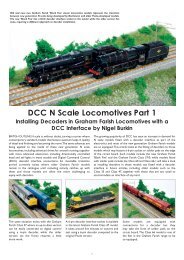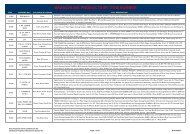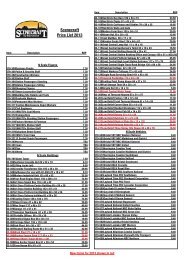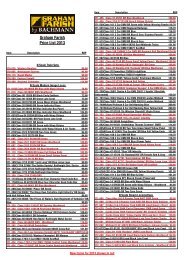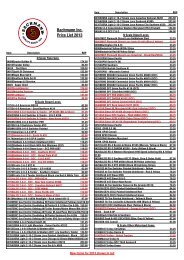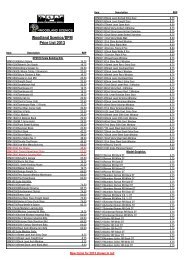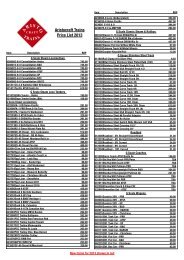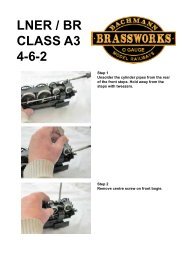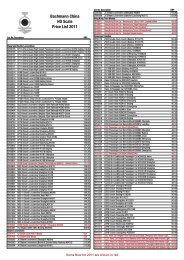Spectrum Steam Sound User Guide(1.4MB) - Bachmann
Spectrum Steam Sound User Guide(1.4MB) - Bachmann
Spectrum Steam Sound User Guide(1.4MB) - Bachmann
Create successful ePaper yourself
Turn your PDF publications into a flip-book with our unique Google optimized e-Paper software.
<strong>Sound</strong> Programmingto find theproper value toprogram intoCV 112. Notethat you willalso have todecide on howmany airpumpsto set (see nextsection) beforefinalizing avalue for thisCV.Table I. CV 112, Exhaust Mode SelectionExhaust ModeWheel Slip RateConventional Rod Engine NoneArticulated EngineNoneArticulated EngineSlowArticulated EngineMediumArticulated EngineFastCV Value0648096112*Compound articulated engines recycled the steam from one cylinder set, thehigh-pressure side, into the second cylinder set, the low-pressure side, and thusproduce the same exhaust cadence as a simple two-cylinder engine. You can readilyidentify a compound type engine by the observing that the low-pressure cylinder aresubstantially larger in diameter than the high-pressure cylinders.**Technically, this did not likely occur often in prototype practice except perhaps whena train was first started as it would result in rapid wear of the slipping drive wheels butit does make for an interesting sound effect.CV 116, Auto Exhaust RateCV 116 is used to adjust the exhaust chuff rate when using Auto-Exhaustsynchronization. Auto-Exhaust automatically generates an exhaust chuff rateproportional to the throttle setting. Since every locomotive is different, CV 116is used to match up the Auto-Exhaust rate to the locomotive speed and maybe loaded with any value between 0 and 255. Higher values will yield higherchuff rates for a given throttle setting. A typical synchronization rate may becomputed as:SPDCV Value = 115.9 X ———DIAX Gear Ratiowhere SPD is the locomotive’s top speed in scale miles-per-hour at fullthrottle and DIA is the locomotive’s driver wheel diameter in scale inches,and Gear Ratio is the gear ratio for shays and other geared engines. Forconventional steam engines, use a Gear Ratio = 1. The driver diametercan be easily measured with a scale ruler but remember to convert themeasurement to scale inches.If you don’t know your locomotive’s top speed, you can also estimate it andstill get pretty good results. A good rule of thumb is to use 45 MPH for freightlocomotives and 70 MPH for passenger engines.Hints for Setting Engine Exhaust Chuff RateBecause most locomotives do not respond linearly (i.e., straight line) to theOEM <strong>Steam</strong> <strong>Sound</strong> <strong>User</strong>’s <strong>Guide</strong> Page 33Return to Main <strong>User</strong>'s <strong>Guide</strong>Return to Table of Contents



